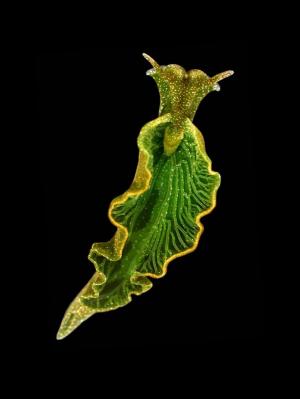 Evolution will never cease to amaze me: scientists have found a slug who can make its own chlorophyll!
Evolution will never cease to amaze me: scientists have found a slug who can make its own chlorophyll!"Shaped like a leaf itself, the slug Elysia chlorotica already has a reputation for kidnapping the photosynthesizing organelles and some genes from algae. Now it turns out that the slug has acquired enough stolen goods to make an entire plant chemical-making pathway work inside an animal body, says Sidney K. Pierce of the University of South Florida in Tampa.
The slugs can manufacture the most common form of chlorophyll, the green pigment in plants that captures energy from sunlight, Pierce reported January 7 at the annual meeting of the Society for Integrative and Comparative Biology. Pierce used a radioactive tracer to show that the slugs were making the pigment, called chlorophyll a, themselves and not simply relying on chlorophyll reserves stolen from the algae the slugs dine on."

 Podcast
Podcast




3 comments:
Wow, that's cool!
I haven't read the paper but assuming that the only defining experiment is the radioactive tracer experiment with no genetic data, I wonder if these stolen genes are located close to one another in it's genome or if they are spread throughout. Was it a few quick acquisition of genes or many over a long period of time?
crazy.
I gather from an interview on Quirks and Quarks that they have, actually, found a number of genes. Not all of them, and not all of those involved in photosynthesis, but a number of genes, yes.
Post a Comment